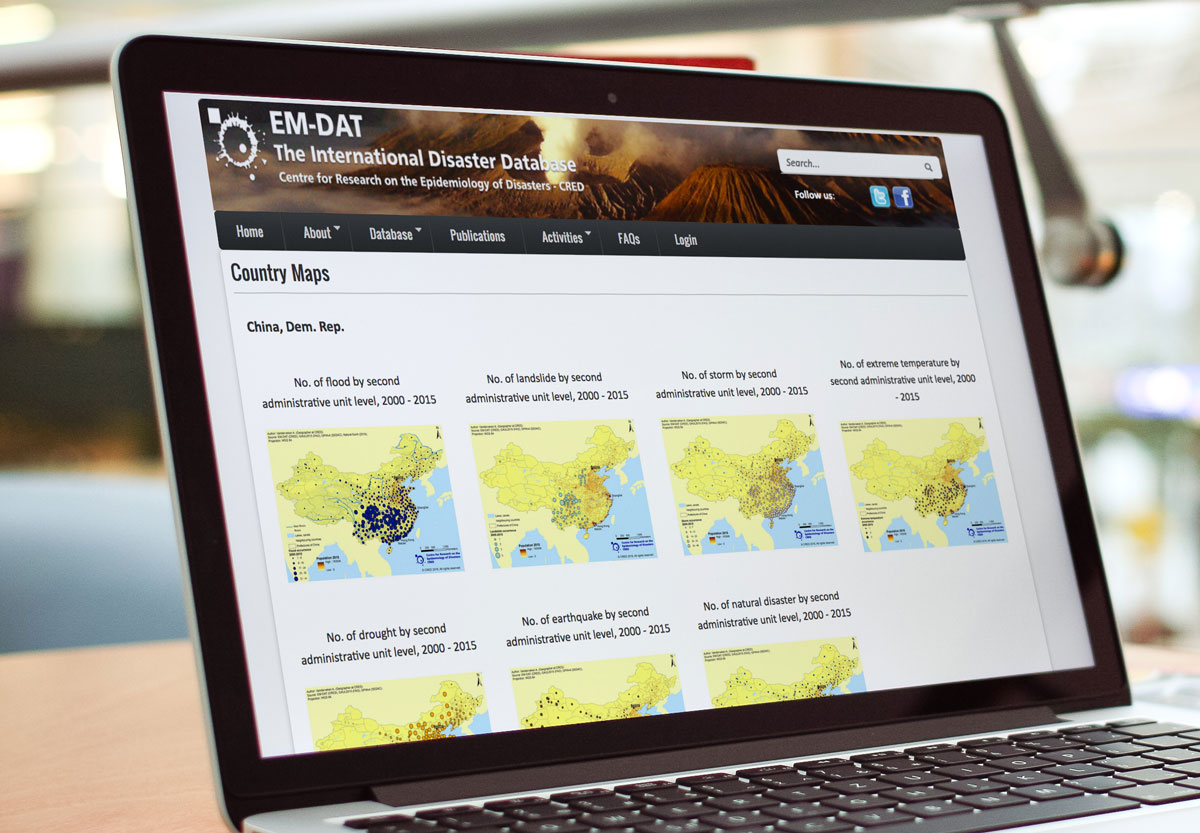Asia-Pacific E-Resilience Toolkit Tool
EM-DAT International Disaster Database
EM-DAT is an online database of historical disaster related information maintained by the Centre for Research on the Epidemiology of Disasters (CRED). Its is a global database on natural and technological disasters, containing essential core data on the occurrence and effects of more than 21,000 disasters in the world, from 1900 to present.
EM-DAT provides an objective basis for vulnerability assessment and rational decision-making in disaster situations. For example, it helps policymakers identify the disaster types that are most common in a given country and that have had significant historical impacts on human populations. In addition to providing information on the human impact of disasters - such as the number of people killed, injured or affected, EM-DAT provides disaster-related economic damage estimates and disaster-specific international aid contributions. Disasters data are available at a country-aggregated level.
Development and relief agencies have long recognized the crucial role played by data and information in mitigating the impacts of disasters on vulnerable populations. Systematic collection and analysis of these data provides invaluable information to governments and agencies in charge of relief and recovery activities. They are also crucial in the integration of health components into development and poverty alleviation programmes. Yet there is still no international consensus regarding best practices for collecting these data. Together with the complexity of collecting reliable information, there remains huge variability in definitions, methodologies, tools and sourcing. EM-DAT is aimed at overcoming some of these issues.
The database is made up of information from various sources, including UN agencies, non-governmental organizations, insurance companies, research institutes and press agencies. Priority is given to data from UN agencies, governments, and the International Federation of Red Cross and Red Crescent Societies. This prioritization is not only a reflection of the quality or value of the data, it also reflects the fact that most reporting sources do not cover all disasters or have political limitations that could affect the figures. The entries are constantly reviewed for inconsistencies, redundancy, and incompleteness. CRED consolidates and updates data on a daily basis. A further check is made at monthly intervals, and revisions are made at the end of each calendar year. Disasters data are entered at a country-aggregated level.
The search engine has been designed to allow users to directly browse EM-DAT's updated and validated disaster information. The search is composed of:
- Country profiles, given by natural and technological disasters.
- Disaster profiles, given by natural and technological and groups of disasters.
- Disasters list, accessible by selecting a data set (region or country, period or period in years, disaster group or disaster type).
- The Advanced Search, allowing users to generate datasheets based on the overall EM-DAT records. Three statistical options are available to generate tables and data sets: Frequency, cross tabulations and totals.
- Maps (based upon the EM-DAT database), providing geographical summaries of natural disasters events and impacts since 1974.
- A Trends Section, providing numerous pre-made graphs and other figures that display various trends and relationships within the EM-DAT.
The database is used by many UN agencies including ESCAP and WHO, journals and news papers and others for research purposes in order to better understand and deal with disasters. CRED is located at the School of Public Health, Université catholique de Louvain in Brussels, Belgium. The database itself is accessible world wide through the internet.






